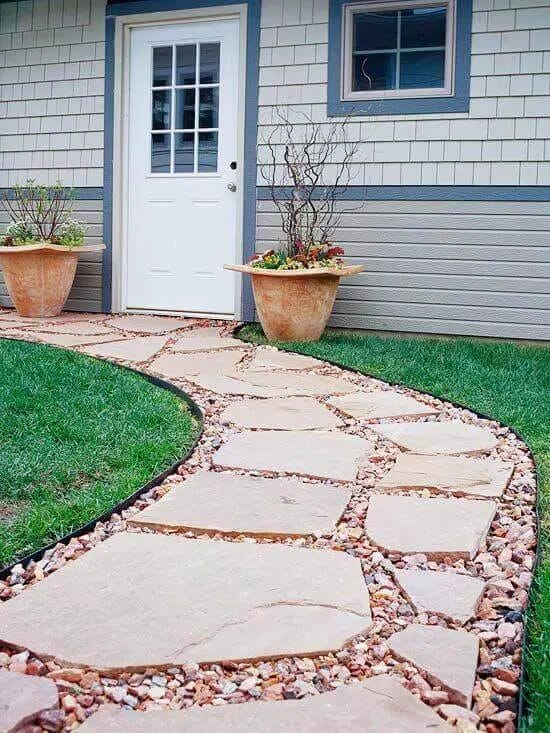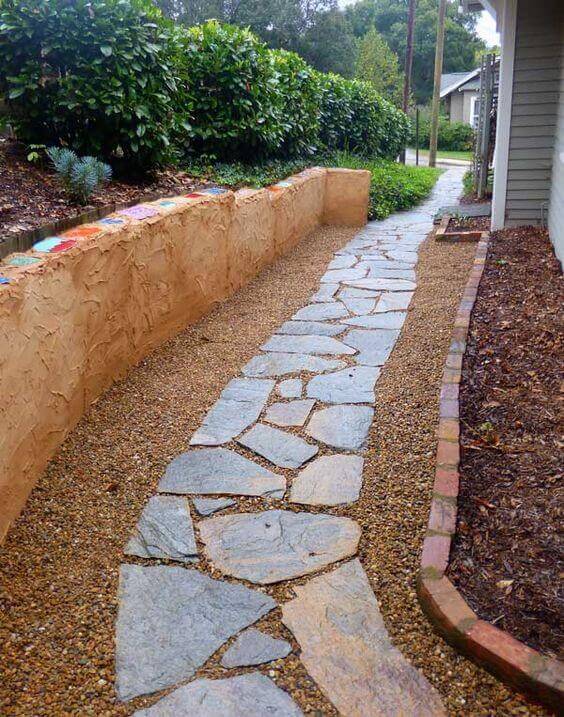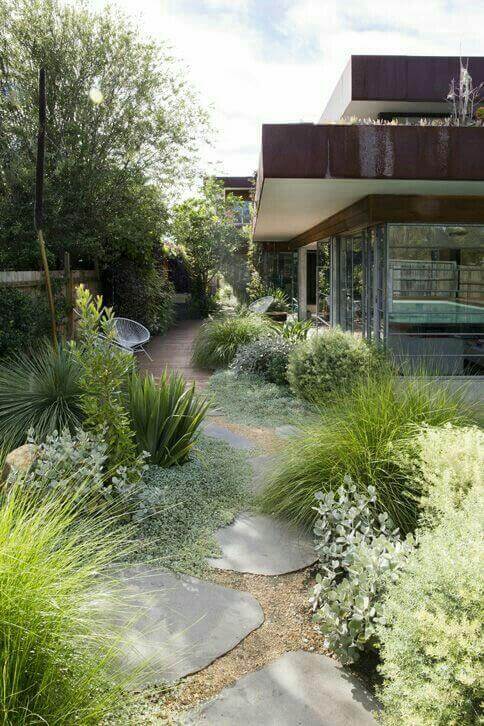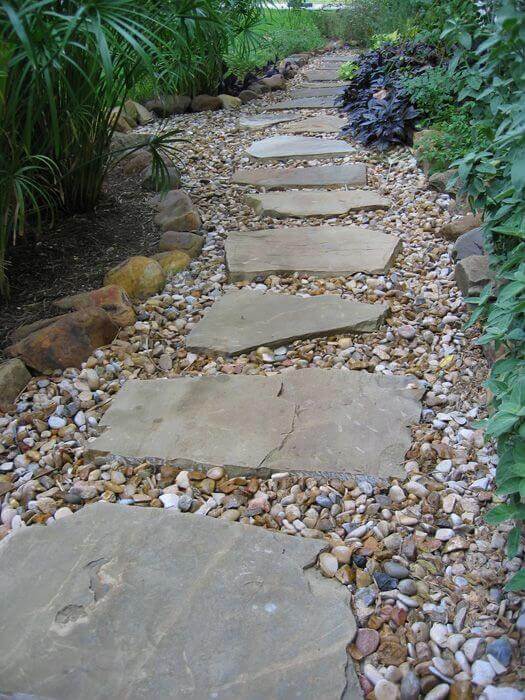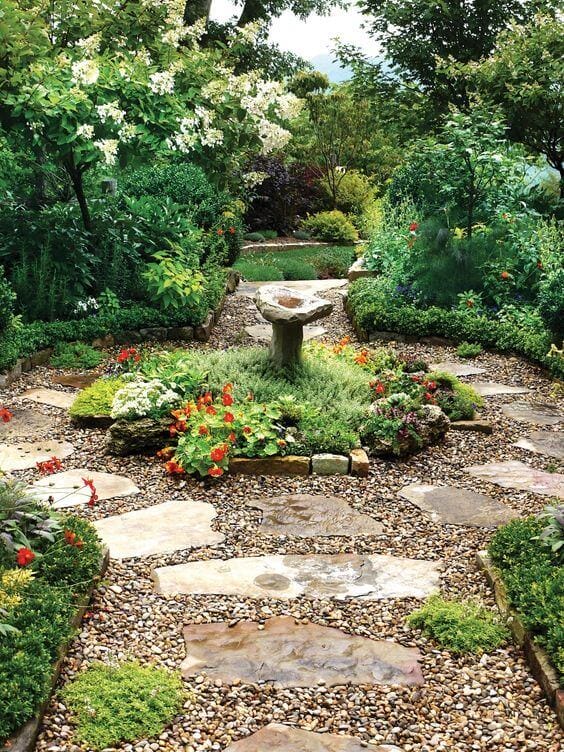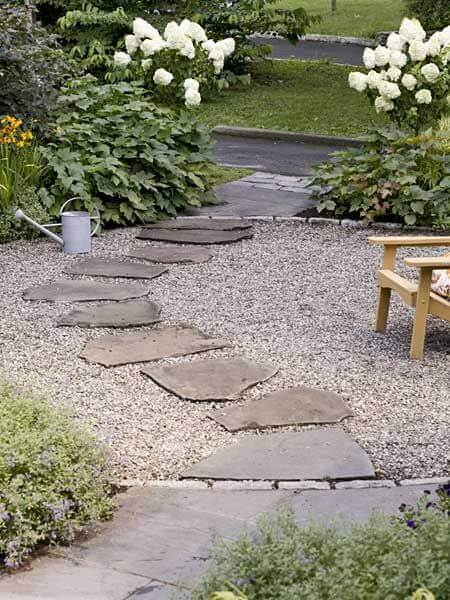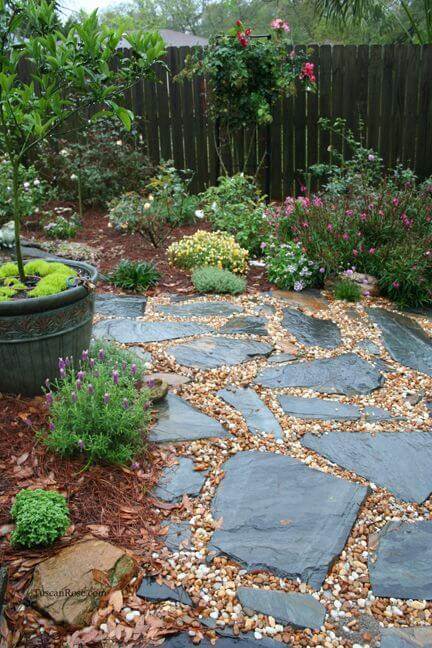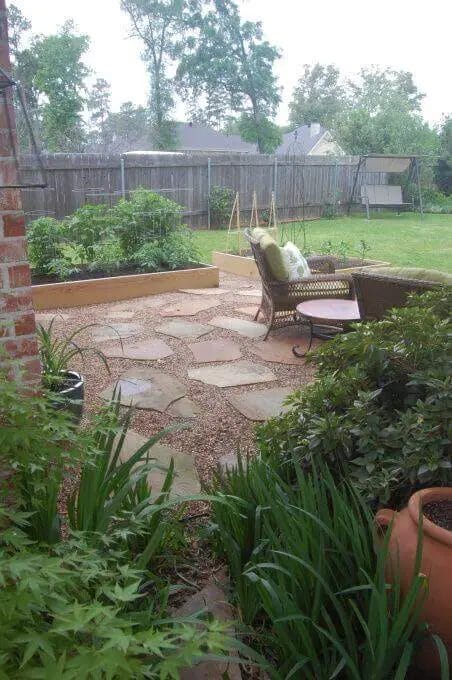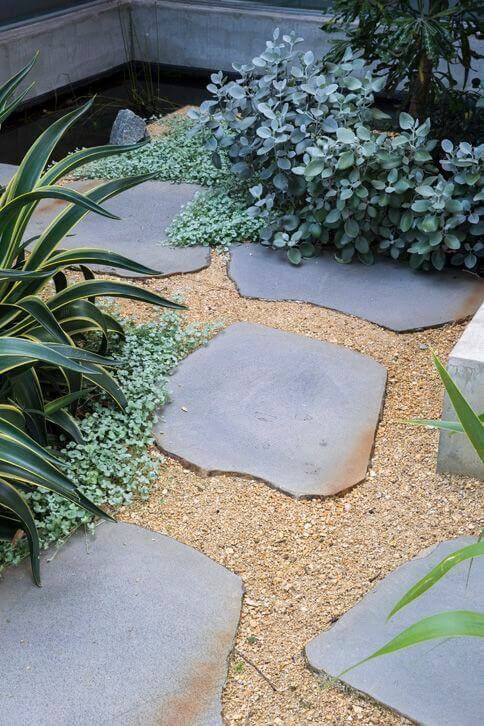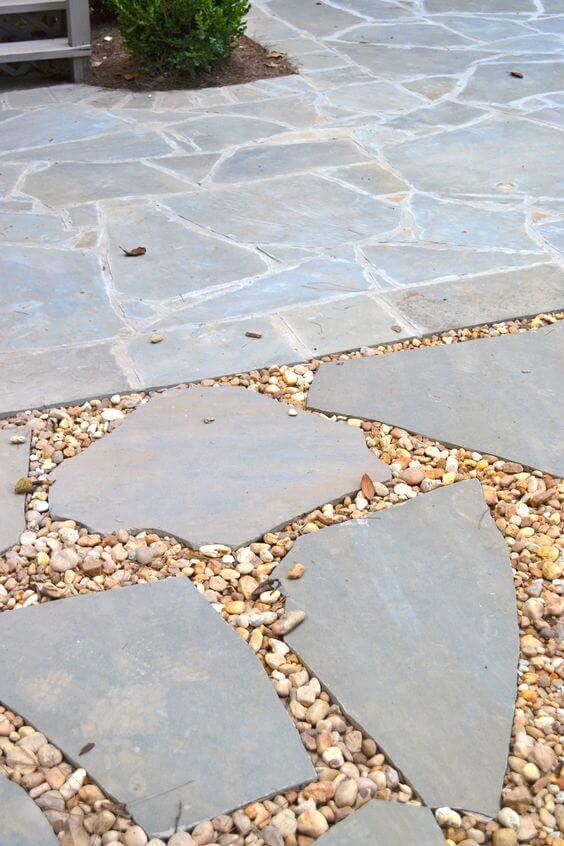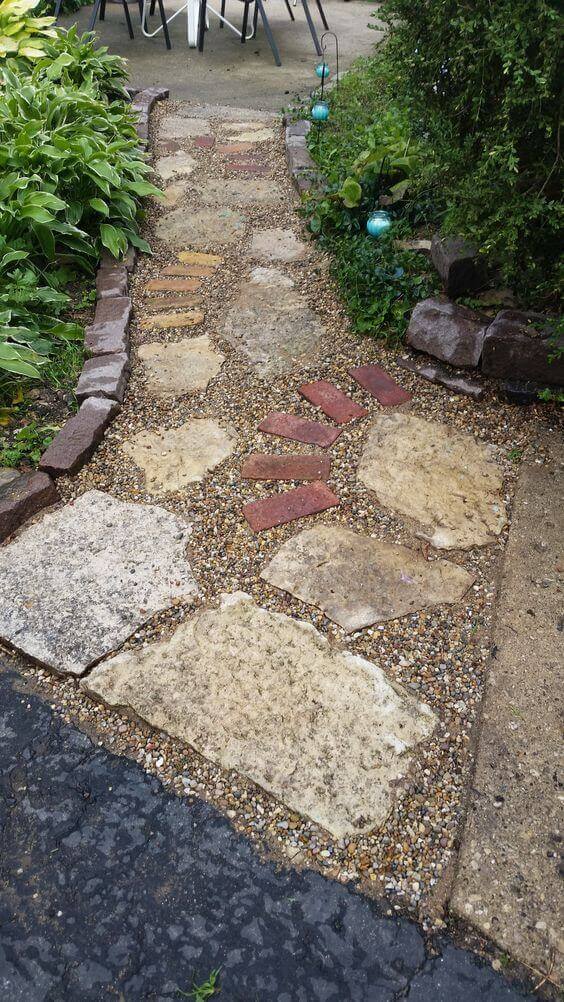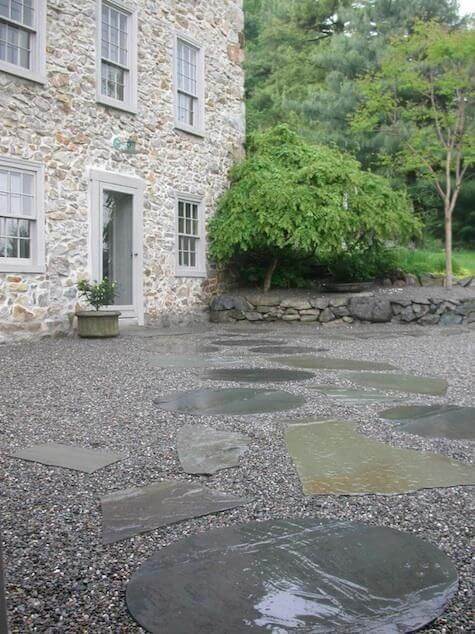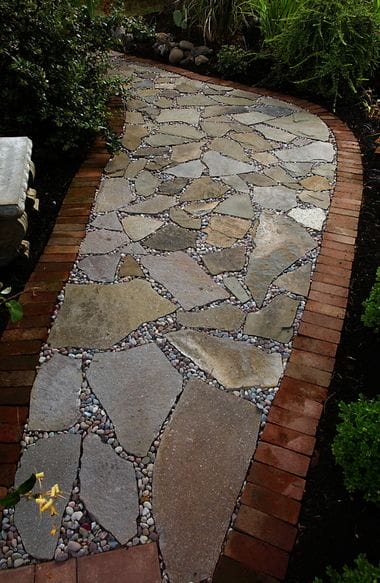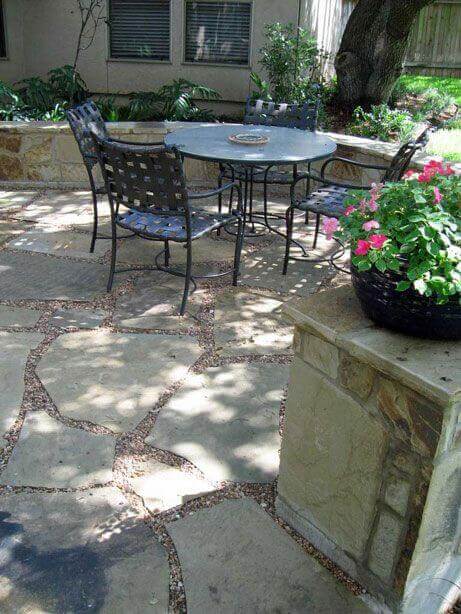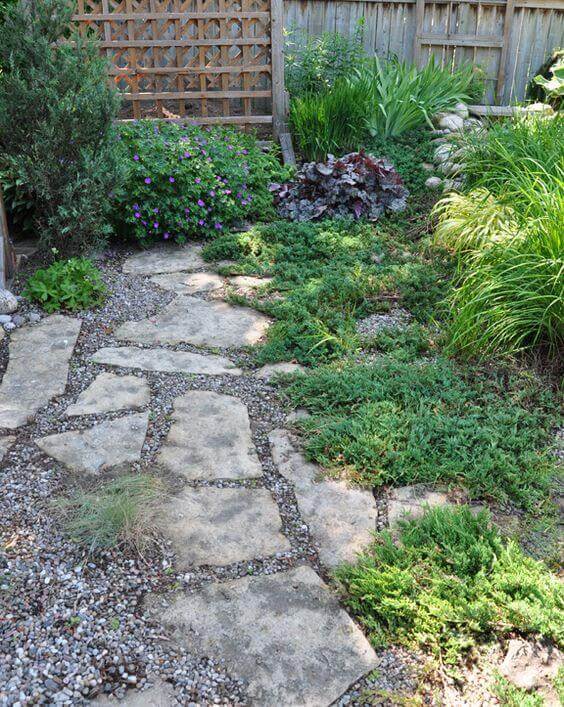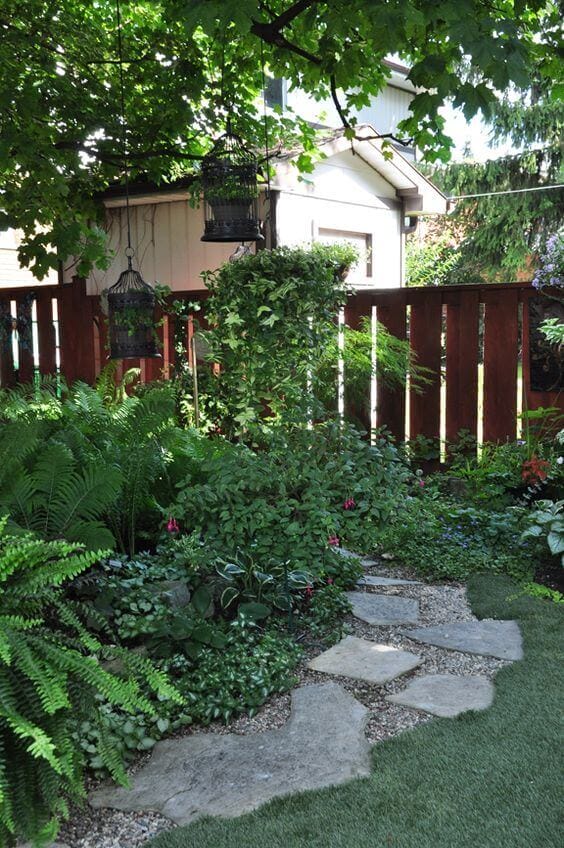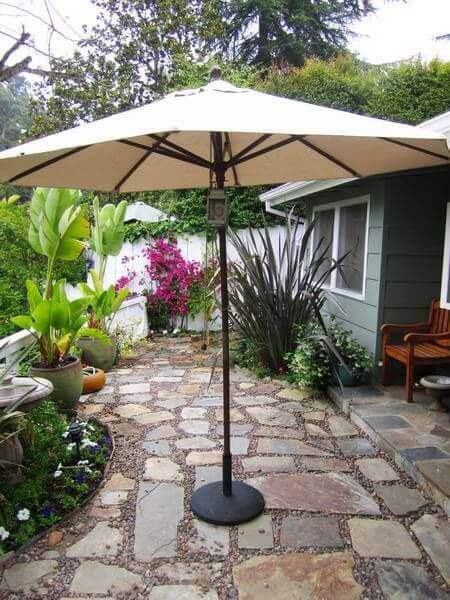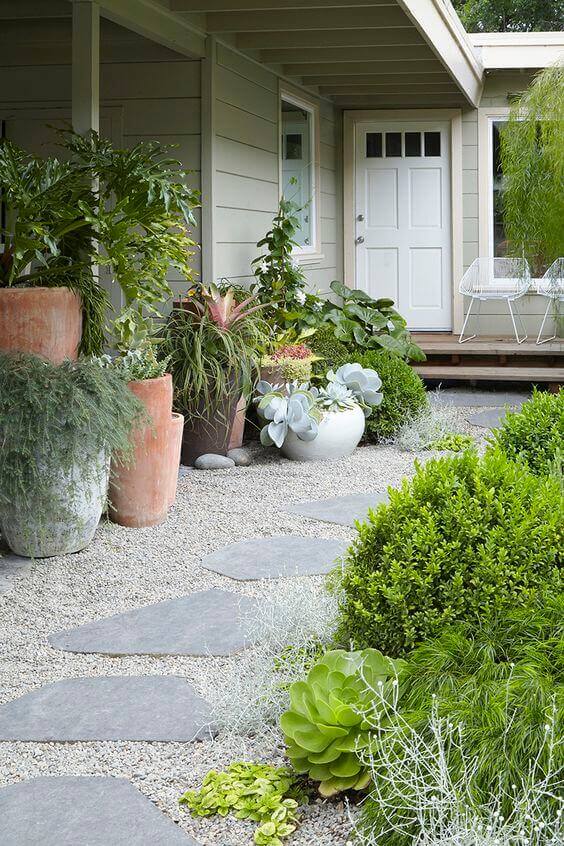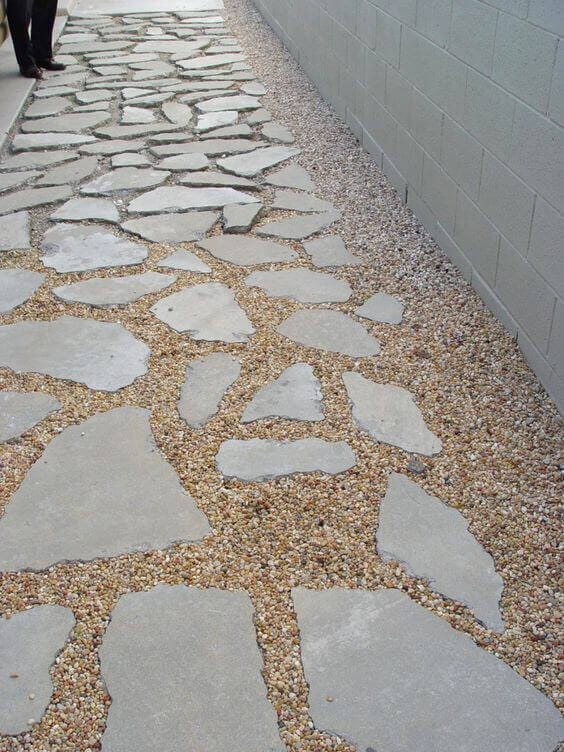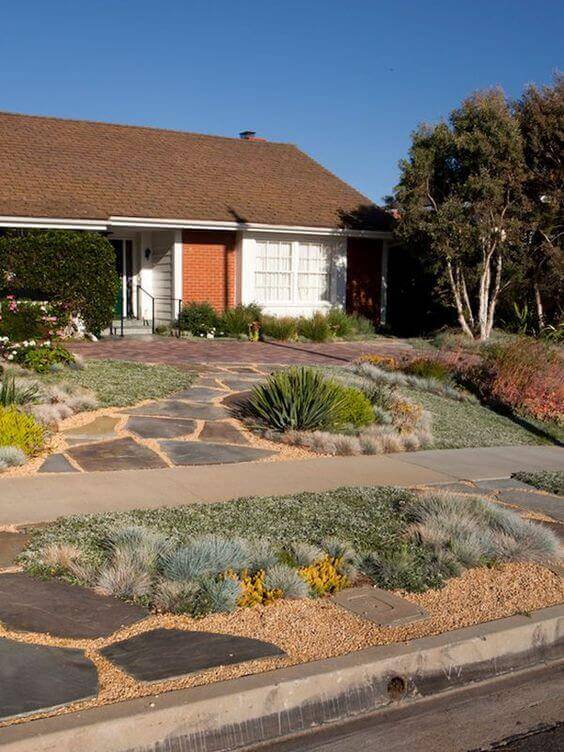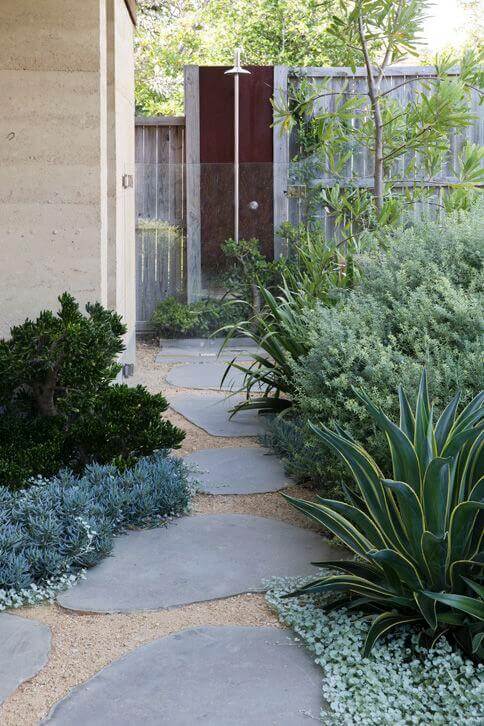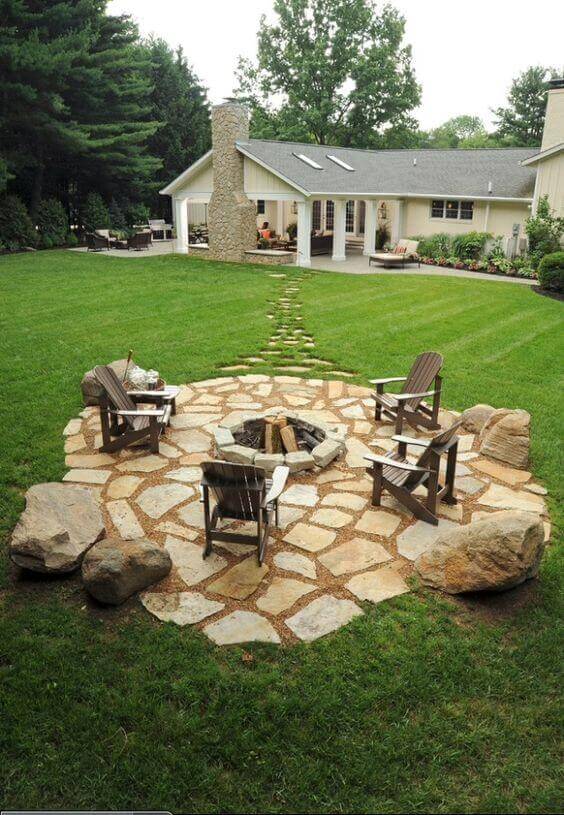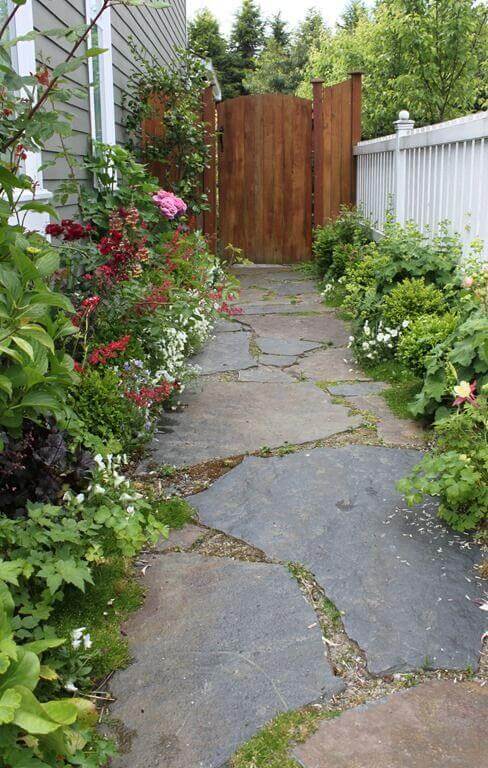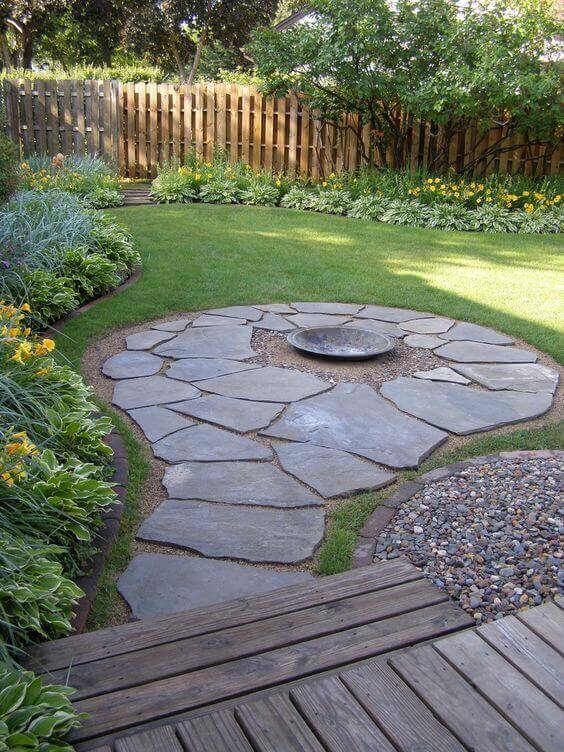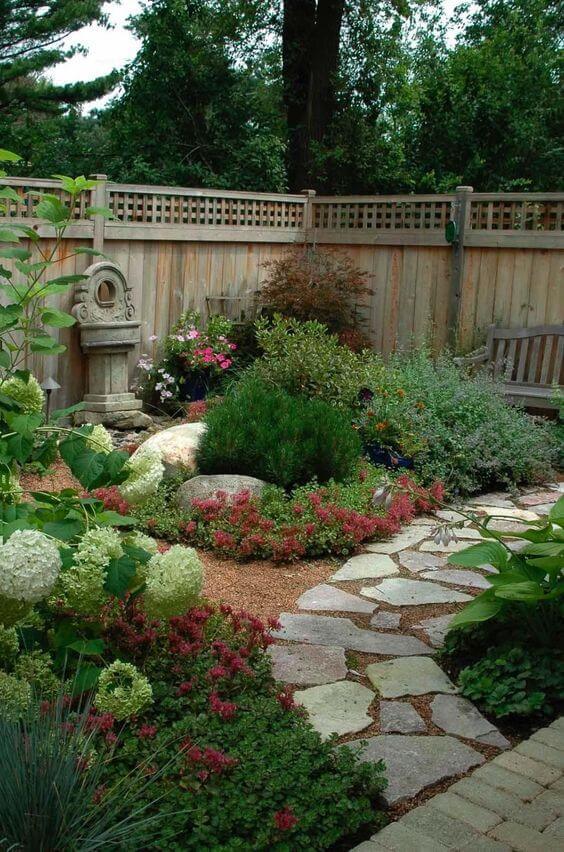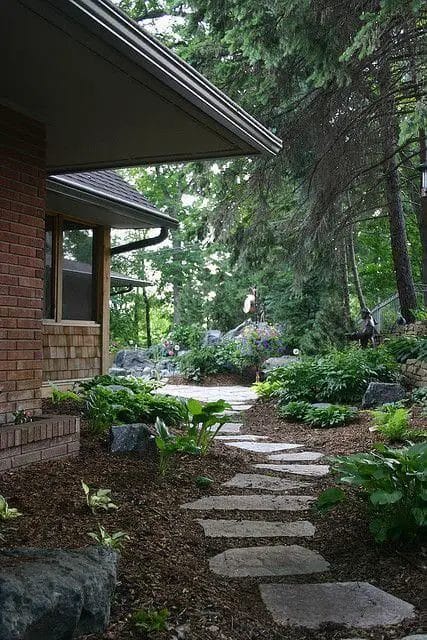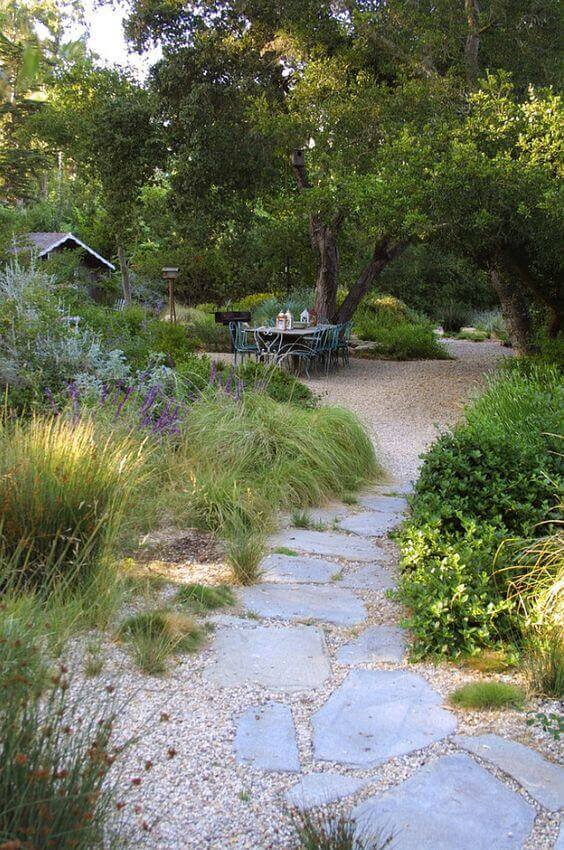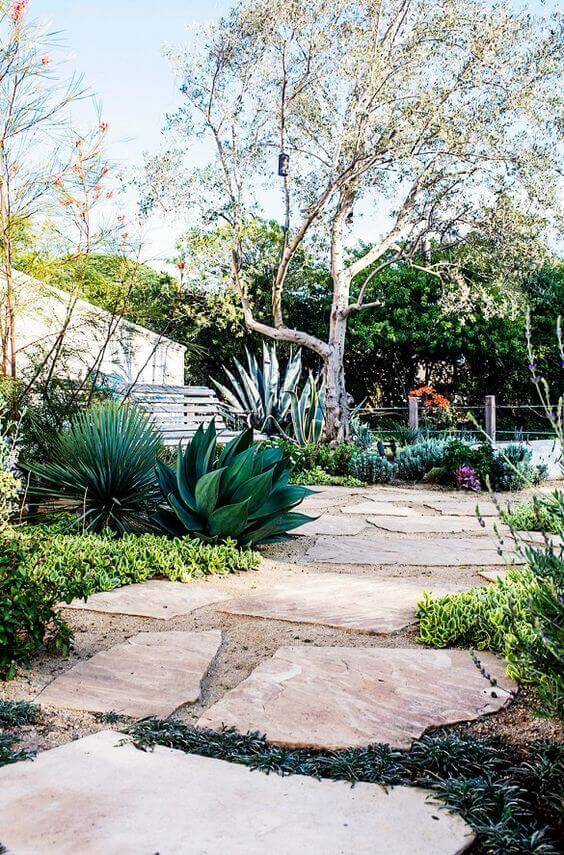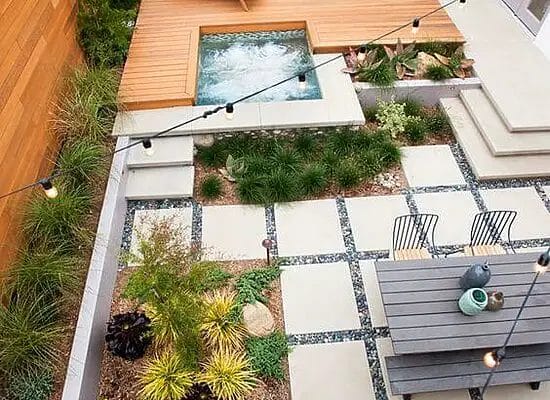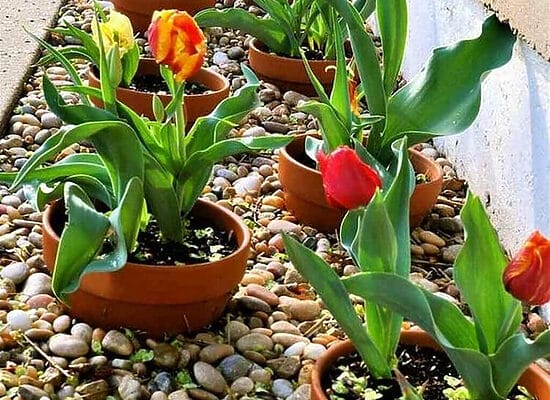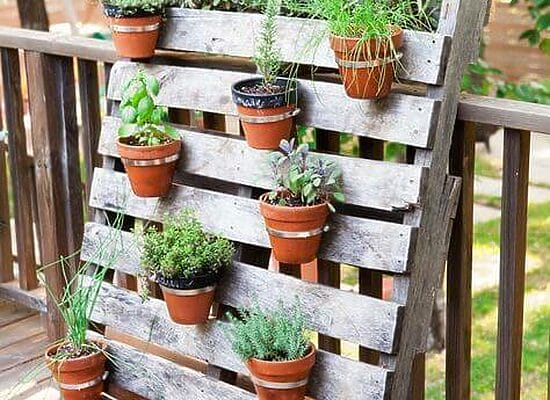A flagstone and gravel walkway may be the right way to go when designing your yard, garden or patio. For this post, we looked into flagstone paths and walkways to illustrate how nice these kinds of ways can look good.
When thinking of laying rock in patio or other outside places, a flagstone and gravel patio can look fantastic when done right. After all, they can be combined perfectly, creating a balanced path while being a decorative fixture at the same time.
You can color coordinate or go for contrast, either way; it is possible to achieve an impressive flagstone and gravel walkway to match the rest of your outside area. This kind of paths can be created in harmony with the remainder of the garden. Perhaps you could try a flagstone patio base matching with the flagstone and gravel walkway and create a lovely combination matching the surrounding yard.
Your garden could be improved with one of these walkways. You could, for instance, create a flagstone and gravel walkway leading into a meditation and relaxation secluded spot deep in your garden, perhaps with a soothing fountain or fireplace.
Do use your imagination and find how your garden could be improved with these paths, as the pictures you will find among our gallery are meant to inspire you into creating which would look the best outside your home. You could hire someone to design it for you, of course, but it is better to know already what you want, is it not?
You can match colors of flagstone and gravel walkway or mix colors within flagstones or between flagstones and gravel. We hope the pictures we gathered will help you in deciding if you like this kind of path and if it works well with the rest of your garden.

